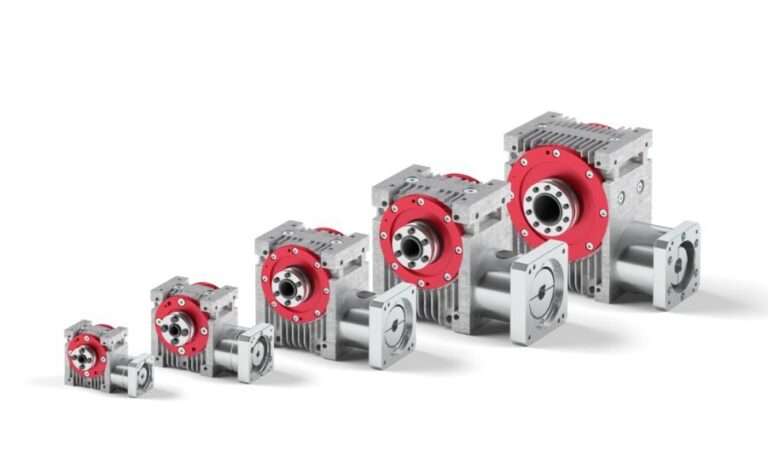Fredrik Taaje Fartskriver Operational, Tachograph, Technology & More
Introduction To Fredrik Taaje Fartskriver
In the transportation industry, accurate monitoring plays a crucial role in ensuring safety, regulatory compliance, and operational efficiency. One key technology that facilitates this is the fartskriver, commonly referred to in English as a tachograph. This device is designed to monitor and record essential driving data, such as speed, distance, and hours of operation. By doing so, it helps ensure that drivers adhere to legal limitations on driving hours and speed, promoting road safety and compliance with regulations. Innovators like Fredrik Taaje have been instrumental in advancing tachograph technology, enhancing its reliability, precision, and ease of use.
This article delves into the fundamental aspects, benefits, applications, and challenges of fartskriver technology, highlighting Fredrik Taaje’s significant contributions. By understanding how these systems function and why they are crucial, fleet managers, drivers, and regulatory bodies can collaborate more effectively to improve safety in the transportation sector.
Understanding Fartskriver Technology

The fartskriver, or tachograph, is a device designed to monitor and record the speed, distance, and driving hours of a vehicle. This technology is predominantly used in commercial and public transportation sectors to enforce compliance with legal driving limits and encourage safe driving behaviors. By accurately tracking these key metrics, tachographs help ensure that drivers follow the established regulations governing their working hours and driving speed, ultimately contributing to safer roads and more efficient fleet management.
Fredrik Taaje: A Leader in Fartskriver Technology Advancements
Fredrik Taaje has played a pivotal role in revolutionizing fartskriver (tachograph) technology, significantly enhancing its functionality, accuracy, and overall reliability. His innovative work has expanded the capabilities of tachographs, transforming them from simple data recording devices into advanced systems that not only track driving metrics but also support driver compliance with regulations and streamline fleet management. Through his efforts, the technology has become more intuitive, efficient, and integral to the operations of modern transportation networks, improving both safety and operational efficiency.
How the Fartskriver Works
The fartskriver, or tachograph, functions by connecting directly to a vehicle’s transmission system. It records crucial data related to the vehicle’s speed, movement, and driver activity. As the vehicle operates, the device continuously collects real-time information about driving speeds, rest periods, and distances traveled. This data is then securely stored within the tachograph’s memory, where it can be accessed later for analysis. By maintaining a detailed record of the vehicle’s activity, the fartskriver provides fleet managers and regulatory authorities with a comprehensive overview of driving patterns, helping ensure compliance with legal driving limits and contributing to safer road practices.
Core Components of Fartskriver Devices
Fartskriver (tachograph) devices are comprised of several key components, each designed to perform specific functions that ensure accurate monitoring and compliance with legal driving standards:
- Speed Sensor: This component continuously measures the vehicle’s speed, recording fluctuations over time to monitor adherence to speed limits.
- Time Module: The time module tracks both driving and rest periods, ensuring that drivers comply with mandatory regulations regarding working hours and breaks.
- Data Storage: This feature securely stores the collected data, allowing authorized personnel to access and review it as needed for compliance checks or operational insights.
- Display Screen: The display provides drivers with real-time feedback on their driving status, including alerts about upcoming rest periods and other critical information.
- Data Output Port: This port allows data to be transferred to external systems for further analysis, compliance auditing, and reporting, ensuring that the transportation company meets all legal requirements.
Why Fartskriver Technology is Essential
Fartskriver technology plays a critical role in promoting road safety and ensuring compliance with regulations, particularly within the commercial transportation sector. By capturing detailed data on driving behavior—such as speed, distance, and rest periods—this technology helps transportation companies monitor driver adherence to legal limits. This not only minimizes the risks associated with driver fatigue and speeding but also supports safer road conditions for all road users. Additionally, the data collected by fartskriver devices aids in regulatory compliance, providing proof of adherence to driving hours and other legal requirements, which is crucial for avoiding fines and improving fleet management practices.
Key Benefits of Using Fartskriver Systems
1. Enhanced Road Safety
Fartskriver technology plays a vital role in improving road safety by helping prevent driver fatigue. By automatically tracking and enforcing mandatory rest periods, these devices reduce the risk of accidents caused by drowsy or overworked drivers. This ensures that drivers take the necessary breaks, contributing to safer driving conditions for everyone on the road.
2. Legal Compliance and Regulation Adherence
In many countries, commercial vehicles are legally required to use fartskriver systems to ensure compliance with regulations on driving hours, speed limits, and rest periods. These devices help transportation companies and drivers meet these legal obligations, preventing potential fines and legal issues by accurately documenting adherence to laws designed to promote road safety and driver well-being.
3. Improved Data Accuracy
Modern digital fartskriver systems provide highly accurate data recording, with built-in features to prevent tampering. This level of precision ensures that the recorded data is reliable for compliance verification, fleet monitoring, and operational assessments. By securing the data in tamper-resistant storage, these systems help maintain the integrity of the information, offering both peace of mind and transparency.
4. Efficient Fleet Management
The insights generated from fartskriver systems enable fleet managers to optimize operations effectively. By analyzing driving patterns, rest times, and route efficiency, fleet managers can make informed decisions that improve overall fleet performance, reduce fuel consumption, and enhance the safety of drivers. This real-time data-driven approach helps streamline operations and supports better decision-making across the fleet.
Applications of Fartskriver Technology Across Different Sectors
Originally developed for commercial transportation, fartskriver technology has proven to be highly versatile, extending its benefits across a wide range of industries. Today, it plays a critical role not only in logistics but also in public transit and emergency services, enhancing safety, efficiency, and compliance in diverse operational environments.
Real-World Use Cases of Fartskriver Systems
Logistics and Freight Transportation
In the logistics and freight transportation sectors, fartskriver systems are invaluable tools for fleet management. By providing detailed data on driving hours, speed, and distances traveled, these systems help ensure that deliveries are made on time while adhering to strict safety regulations. This technology allows fleet managers to optimize routes, monitor driver behavior, and maintain compliance with regulations, all of which contribute to smoother operations and reduced operational risks.
Public Transit
Public transit agencies rely on fartskriver technology to help drivers comply with legal driving limits, including mandated rest periods. This compliance is crucial for maintaining passenger safety, service punctuality, and overall reliability. By tracking the operational hours of drivers and monitoring the real-time status of vehicles, fartskriver systems support the efficient management of public transit networks, ensuring both safety and on-time service.
Emergency Response Vehicles
In emergency services, fartskriver systems are used to manage vehicle speed and ensure compliance with legal driving regulations, even during high-pressure situations. While emergency response vehicles often need to operate at high speeds to reach critical locations quickly, fartskriver technology helps ensure that drivers remain within the law and adhere to necessary rest periods, promoting both safety and effectiveness in urgent scenarios.
Compliance and Regulatory Standards for Fartskriver Technology
Fartskriver devices are required by law in many regions for commercial vehicles above a specific weight threshold. These regulations ensure that data is recorded at consistent intervals, tracking key metrics such as speed, driving hours, and mandatory rest periods.
By enforcing these standards, fartskriver technology helps create a uniform approach to safety across the transportation industry, ensuring that all drivers and fleet operators adhere to legal requirements designed to reduce risks, improve driver well-being, and enhance overall road safety. This consistency not only supports regulatory compliance but also fosters safer, more efficient operations within the commercial transportation sector.
Challenges in Implementing Fartskriver Technology
While fartskriver technology offers numerous advantages, its implementation can present several challenges that must be addressed for successful integration:
- Driver Resistance: Some drivers may view the monitoring capabilities of fartskriver devices as restrictive or intrusive, leading to resistance against their use. It is important to communicate the benefits of these systems, such as enhanced safety and compliance, to overcome these concerns.
- Technical Failures: Like any technology, fartskriver devices can experience mechanical or digital malfunctions that disrupt their ability to collect and record data accurately. Regular maintenance and system checks are essential to ensure the continued reliability of these devices.
- Data Interpretation Challenges: The raw data collected by fartskriver systems may be complex and require expert analysis to extract meaningful insights. Proper training for fleet managers and operators is critical to understanding and utilizing the data effectively.
Addressing Common Misconceptions about Fartskriver
There are several misconceptions about fartskriver technology that can hinder its adoption and proper use. Some of the most common myths include:
- Privacy Concerns: Drivers often worry that fartskriver devices might infringe on their privacy. However, these devices only record operational data related to vehicle speed, driving hours, and rest periods—not personal activities.
- Constant Surveillance Misconception: Another common myth is that fartskriver systems track drivers’ every move, even off-duty. In reality, these devices are only concerned with monitoring driving-related activities and do not record non-operational behaviors. This helps protect drivers’ privacy while ensuring regulatory compliance.
Solutions to Overcome Fartskriver Implementation Challenges
To effectively address the challenges associated with fartskriver technology, several proactive solutions can be implemented:
- Driver Training and Education
One of the most effective ways to overcome resistance from drivers is through comprehensive training and education. By clearly explaining the benefits of fartskriver technology, such as improved safety, reduced accident risks, and better regulatory compliance, drivers are more likely to accept and engage with the system. Training programs should focus on how fartskriver systems enhance overall safety and contribute to their well-being on the road, helping to foster a positive outlook on the technology.
Transitioning to Digital Fartskriver Models
Switching to digital fartskriver systems can significantly improve reliability and data accuracy. Digital models are generally more resilient to technical issues and provide more precise data collection compared to their analog counterparts. These systems are also easier to maintain and troubleshoot, reducing the risk of data inaccuracies caused by mechanical failures or outdated technology.
- Software Integration for Streamlined Data Analysis
Integrating fartskriver data with fleet management software can simplify the process of data analysis and interpretation. Real-time insights from these systems allow fleet managers to quickly assess driving patterns, ensure compliance, and make more informed decisions regarding route optimization and driver behavior. By automating data analysis, these platforms can help reduce manual effort, improve decision-making efficiency, and enhance the overall management of fleet operations.
How Fartskriver Data Supports Accident Investigations
In the event of an accident, fartskriver data plays a crucial role by providing objective, time-stamped records of key driving metrics, including speed, distance, and driver rest periods.
This data offers an accurate account of the vehicle’s activity leading up to the incident, helping to determine if all regulations, such as speed limits and rest requirements, were adhered to. By offering verifiable facts, fartskriver data aids investigators in drawing evidence-based conclusions, ensuring transparency and supporting thorough, fair accident investigations.
Integrating Fartskriver Data into Fleet Management Systems
Integrating fartskriver data into modern fleet management systems can greatly enhance operational efficiency and decision-making:
- Real-Time Monitoring: Fleet managers can track vehicle activities in real time, enabling quick responses to any issues and ensuring that vehicles are operating within safety and compliance parameters.
- Automated Compliance Checks: With automated reporting, fleet managers can simplify the process of conducting compliance audits and regulatory checks. This helps ensure that all vehicles meet legal requirements without manual oversight.
- Predictive Analytics: By analyzing historical data, fleet managers can leverage predictive analytics to identify trends and potential risks before they occur. This proactive approach helps optimize fleet performance, reduce downtime, and prevent issues from escalating into costly problems.
Future Prospects of Fartskriver Technology
Fartskriver technology is rapidly advancing, and future developments promise even greater enhancements in its functionality and applications. Some key areas of improvement include:
- Enhanced Connectivity: Future fartskriver systems are likely to incorporate seamless integration with GPS and wireless networks, allowing for real-time data tracking. This will provide fleet managers with more precise, up-to-the-minute information on vehicle locations, speeds, and compliance statuses.
- Improved Interface Designs: The user interface of fartskriver devices is expected to become more intuitive and driver-friendly. Enhanced display screens will provide clear, real-time feedback, making it easier for drivers to monitor their compliance with driving regulations, rest periods, and other key metrics.
- AI and Predictive Analytics: The integration of artificial intelligence (AI) and advanced analytics is set to revolutionize fartskriver technology. By analyzing historical driving data, AI can predict potential issues, such as excessive driving hours or fatigue, before they occur. This proactive approach will help improve safety, reduce risks, and enhance overall fleet performance.
16. Conclusion
Fredrik Taaje’s advancements in fartskriver technology have had a profound impact on the commercial transportation industry. Through innovations that provide accurate, reliable data, fartskriver devices have played a crucial role in enhancing driver accountability, improving safety standards, and ensuring regulatory compliance. Despite the challenges associated with their implementation, fartskriver systems have proven invaluable in raising safety standards across a variety of sectors. As the technology continues to evolve, it is expected to offer even more sophisticated solutions that further enhance the efficiency and safety of transportation operations worldwide.
Frequently Asked Questions (FAQs) About Fartskriver Technology
1. What is a fartskriver (tachograph)?
A fartskriver, also known as a tachograph, is a device used in commercial vehicles to record key driving data, such as speed, distance traveled, and the driver’s working hours. It ensures that drivers adhere to legal regulations regarding driving limits, rest periods, and speed.
2. Why is fartskriver technology important?
Fartskriver technology is crucial for improving road safety, ensuring legal compliance, and enhancing fleet management. It helps reduce risks associated with driver fatigue and speeding, while providing fleet managers with valuable data to optimize operations and maintain regulatory compliance.
3. How does fartskriver technology work?
The fartskriver system connects to a vehicle’s transmission and records driving data in real time, including speed, distance, and driving hours. It stores this information securely, making it available for future retrieval, analysis, and compliance verification.
4. Who needs to use fartskriver devices?
Fartskriver devices are typically required in commercial vehicles that exceed a certain weight or are involved in specific types of transport, such as freight, public transit, and emergency services. These regulations vary by region but are generally aimed at ensuring safety and compliance with driving laws.
5. What are the benefits of using fartskriver systems?
Fartskriver systems offer numerous benefits, including:
- Enhanced road safety by preventing driver fatigue
- Improved legal compliance with driving hours, speed limits, and rest regulations
- Increased data accuracy with tamper-proof digital records
- Better fleet management through real-time data analysis and insights
6. Are there any challenges in implementing fartskriver systems?
Yes, some challenges include resistance from drivers who may feel monitored, technical issues that can affect data accuracy, and the complexity of interpreting large data sets. However, with proper training, digital upgrades, and software integration, these challenges can be effectively managed.
7. How can the data from fartskriver systems be used?
The data collected from fartskriver devices can be used for various purposes, including accident investigations, compliance audits, and optimizing fleet operations. It helps fleet managers ensure that drivers adhere to legal limits, monitor performance, and improve safety standards.
8. How is fartskriver data integrated into fleet management systems?
Fartskriver data can be integrated into digital fleet management platforms, allowing real-time monitoring of vehicle activities, automated compliance checks, and predictive analytics. This integration streamlines operations, provides valuable insights, and helps improve overall fleet performance.
Key Facts About Fartskriver Technology
- Legal Requirement: Fartskriver devices are legally required in many countries for commercial vehicles over a certain weight, helping to enforce compliance with regulations on driving hours, speed limits, and mandatory rest periods.
- Data Security: Modern digital fartskriver systems store data in tamper-resistant memory, ensuring the integrity and accuracy of the information recorded, which is essential for compliance and safety monitoring.
- Technological Advancements: Fartskriver technology is evolving to include features such as enhanced connectivity with GPS, predictive analytics powered by AI, and more user-friendly interfaces that help drivers and fleet managers better monitor compliance.
- Wide Industry Application: Initially developed for commercial transport, fartskriver technology is now used across various sectors, including logistics, public transit, and emergency services, where it plays a key role in optimizing operations and improving safety.
- Efficiency in Fleet Management: The data provided by fartskriver systems enables fleet managers to optimize routes, monitor driving behavior, and make informed decisions, ultimately improving efficiency and reducing operational costs.
- Accident Investigation Tool: Fartskriver data provides an objective record of driving activity, such as speed and rest periods, which can be critical in determining the cause of accidents and ensuring accurate investigations.
For more Information About Technology visit idealrular






